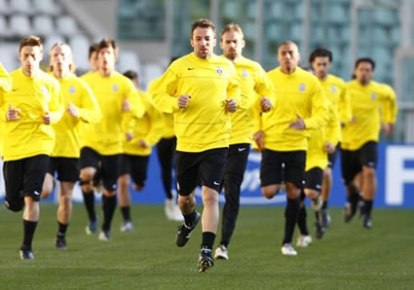
Having worked in the fitness industry for my entire adult life, I have been exposed to hundreds of different fitness trainers, with equally as many different types of fitness training methods. It seems that every few months, a new fad (be it a new piece of equipment, exercise video, training theory/methodology, etc..) gets hailed as the next “big thing” that will revolutionize the way people train.
While I do believe there is scientific merit to several of the new and popular types of exercise equipment out there (for example, the TRX trainer, or vibration plates, to name a few), I also think it is imperative for athletes to be wary and skeptical of new methods of training or equipment. A lot of time, effort, and money can easily be wasted on training that does not follow the one principle of training which is the cornerstone of sport-specific strength and conditioning: the principle of specificity. The principle of specificity dictates that the human body will undergo specific adaptations to training, that are specific to the imposed load placed on it by the training stimulus. Simply put, you will become good at what your are training.
Soccer players should interpret the principle of specificity to mean that, if they want to become better at playing soccer, they should play a lot of soccer. As much soccer as they can, in fact. Their fitness training, although focused on improving their physical ability, should also involve playing a lot of soccer. Their fitness training that does not involve playing a lot of soccer, should be centred around improving the specific physical abilities that the sport requires, namely, running and jumping. Other types of training that do not involve playing soccer, running, or jumping, are not really the most effective and productive use of a soccer player’s limited time. This is especially true for elite youth soccer players between the ages of 12-18, who are in their mid-to-late stages of physiological and neuromuscular development. Players in this age category will require a strong focus on developing the key areas of soccer-specific fitness (aerobic endurance, running speed, and jumping power) in order to achieve peak physical ability in time for opportunities to participate in higher level soccer after high-school (university, professional, and international).
To become physically better at soccer, the best thing any soccer player can do is to play more soccer. Running training, especially high intensity aerobic interval training, is the next best kind of training, because it will help soccer players meet the high aerobic demands of the sport. Finally, a combination of speed training (fast running and sprinting), and plyometrics (fancy word for “jumping”) are the most effective ways for soccer players to meet the other physical demands of soccer.
I encourage all soccer players – and all other athletes – who are looking into any new type of training method or equipment to always consider the training principle of specificity. If you want to become better at flipping tires, then flip tires. If you want to become better at lifting heavy weights, then lift heavy weights. And if you want to become better at soccer, then run, jump, and play soccer.
I’d love to hear your thoughts on this topic. Drop me a line here to get the conversation started.

I agree with your general point of training specifically for football, however don’t forget to get good at ‘jumping’ = power then you need strength and to get strength you need to lift functional ‘heavy’ weights. This won’t come from playing football or doing core exercises.
Hi Matt,
thanks for your reply. In general, I was commenting about the best and most efficient use of training time, especially for youth players. There is certainly no substitute for weight training, and it needs to be incorporated into the training routine for higher level players. I just think that over the course of a season, 2 1/2 to 3 months of heavier lifting should be enough, even for top level players, to build strength in their legs. The remainder of their fitness training time should be spent on the field, and as much of it should be done with a ball as possible.
Richard
Isn’t this in somewhat of a contradiction to another tweet posted that says the players should play others sports, to become A) less susceptible to injury B) athletes first
Hi Parm,
thanks for your comment. My previous article about soccer players participating in other sports was directed at parents of youth athletes (children between the ages of 8 to 12). My recommendation in that article was that youth athletes participate in running, and gymnastics or martial arts, in addition to soccer, to develop more as athletes and to reduce injury.
The focus of this article is on elite level youth-senior players (ages 12 and up) who are in a high performance environment. The reality is that the older players get, the less they should be doing anything else other than playing soccer. Even their physical fitness training should be focused completely on developing the specific physical abilities (high intensity running ability, speed, power, and strength) that are needed in soccer.
In summary, players between the ages of 8-12 should participate in a variety of sports, but include running training and gymnastics training in their routine. From the age of 13-onwards, elite level soccer players should focus on soccer and on physical training that is specific and directly related to soccer.